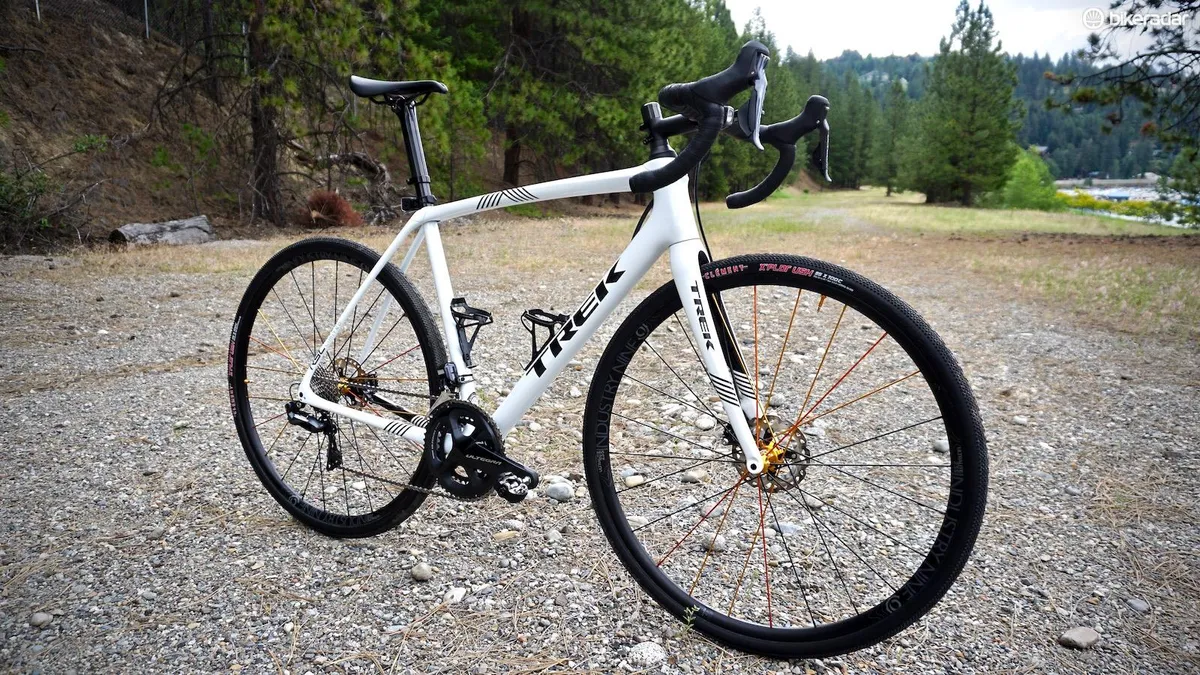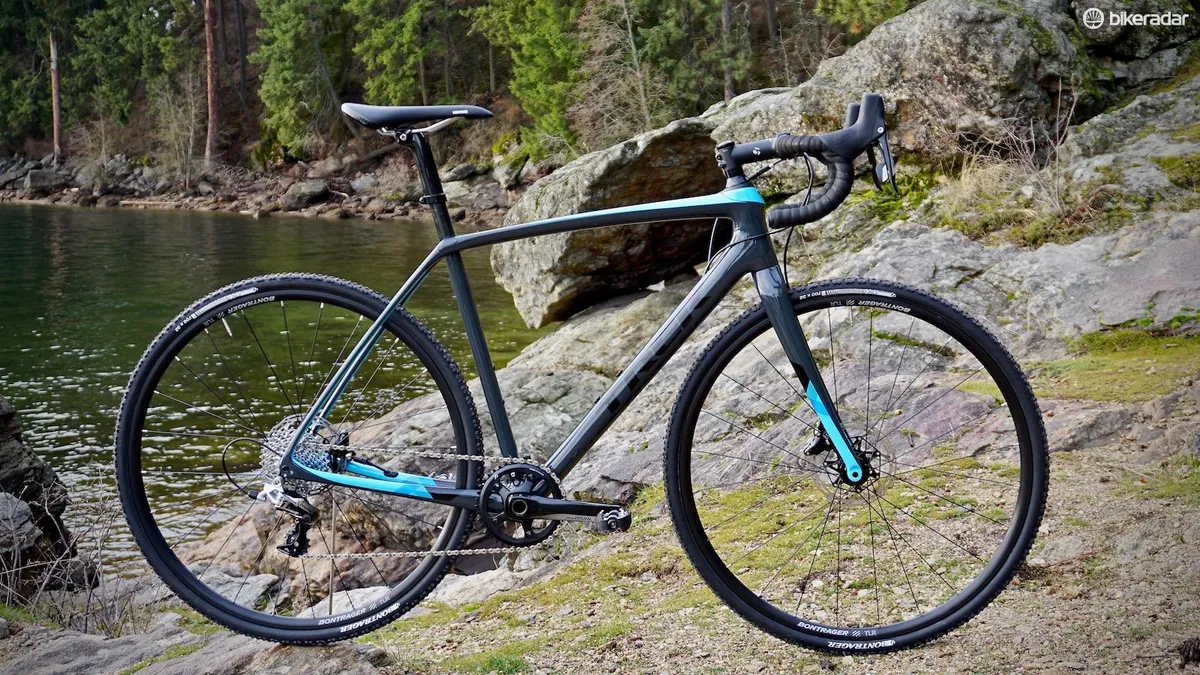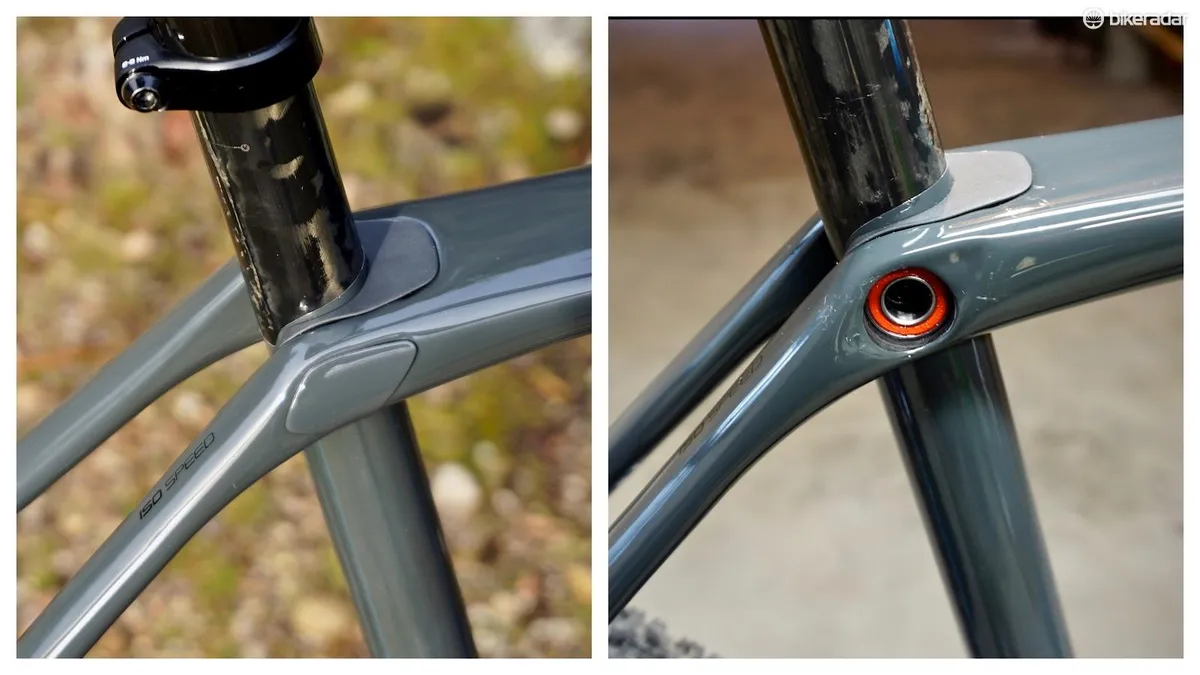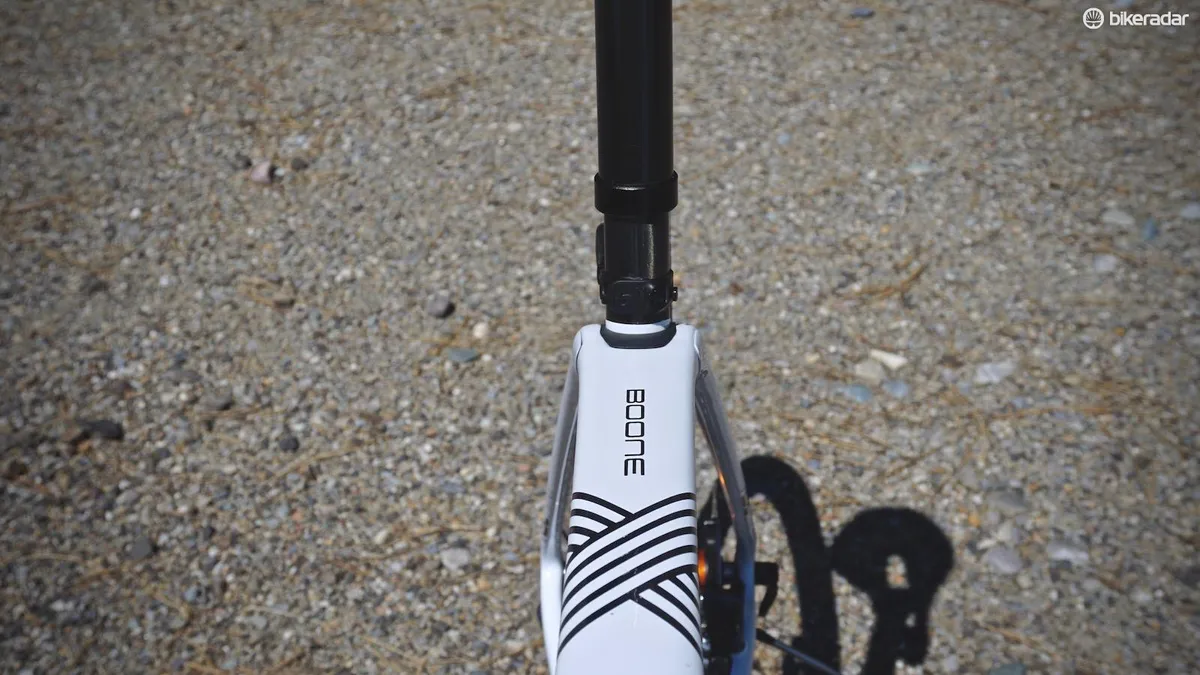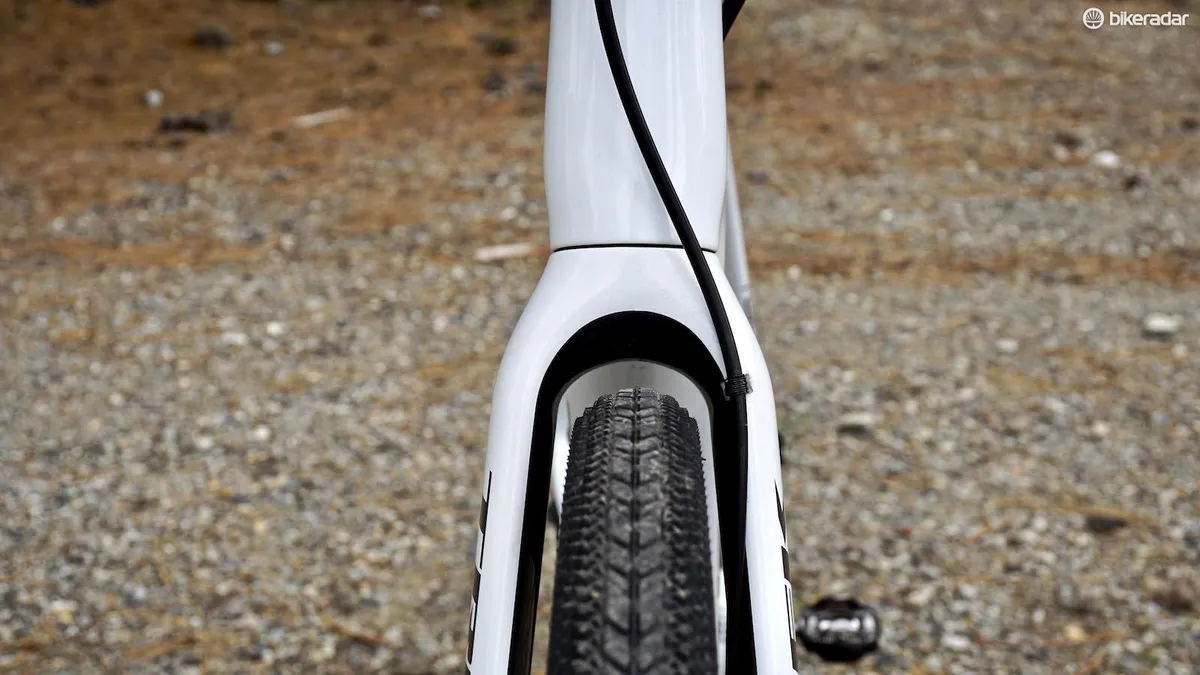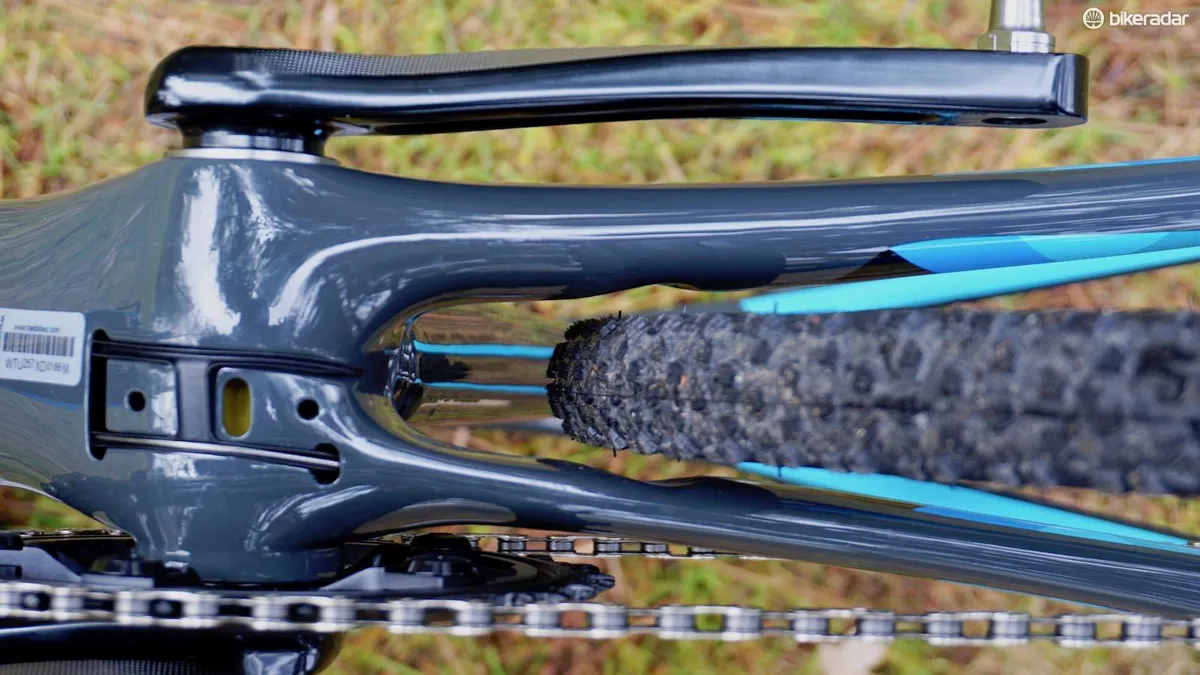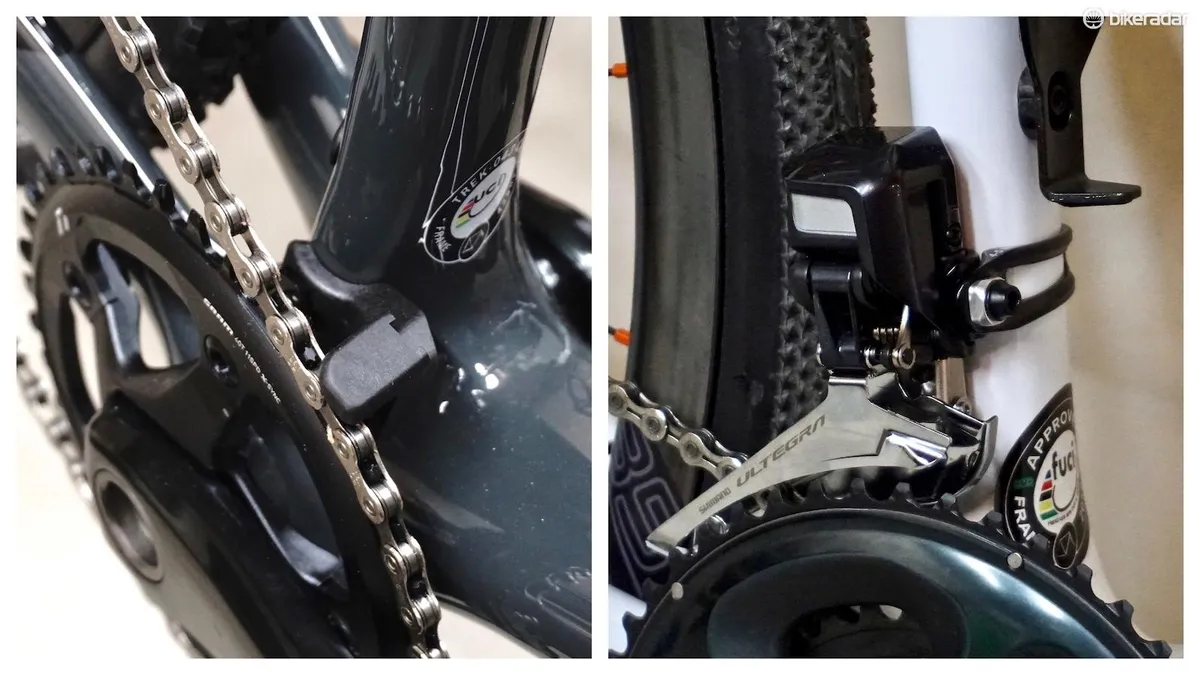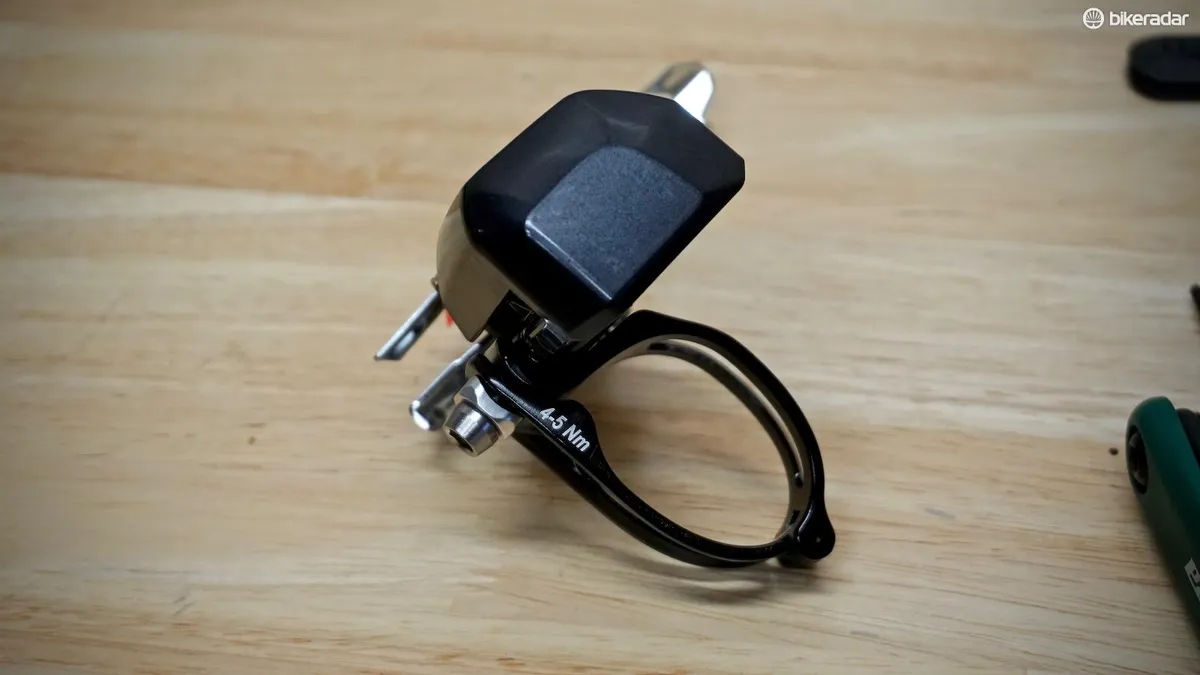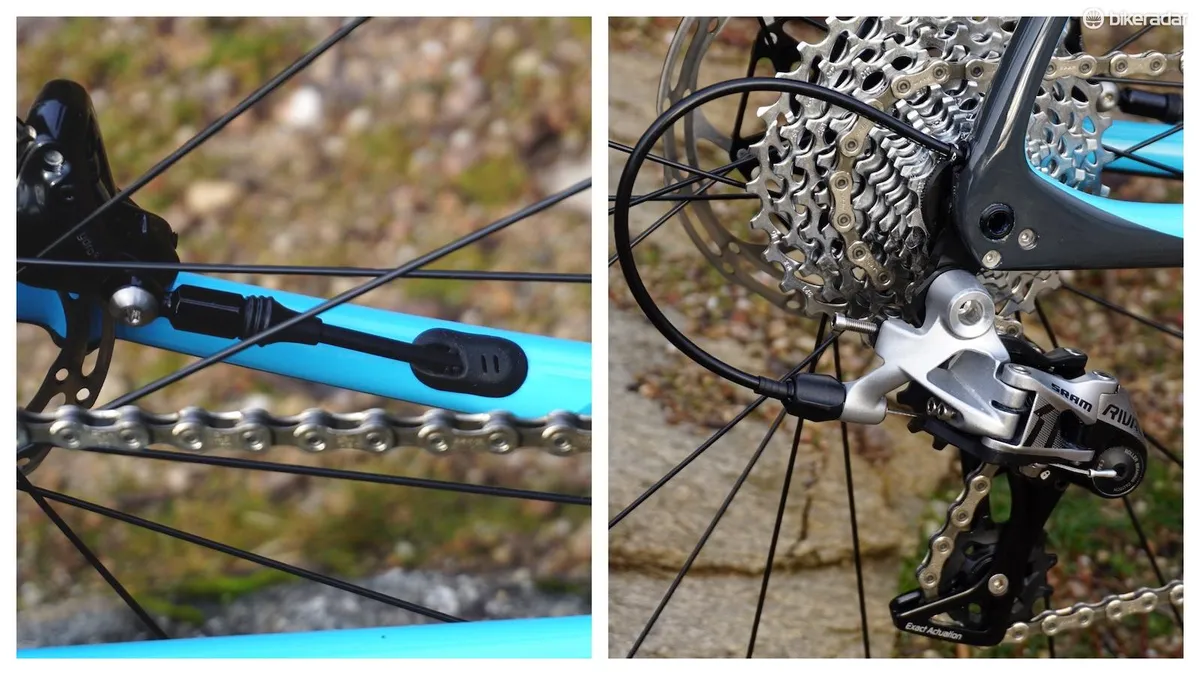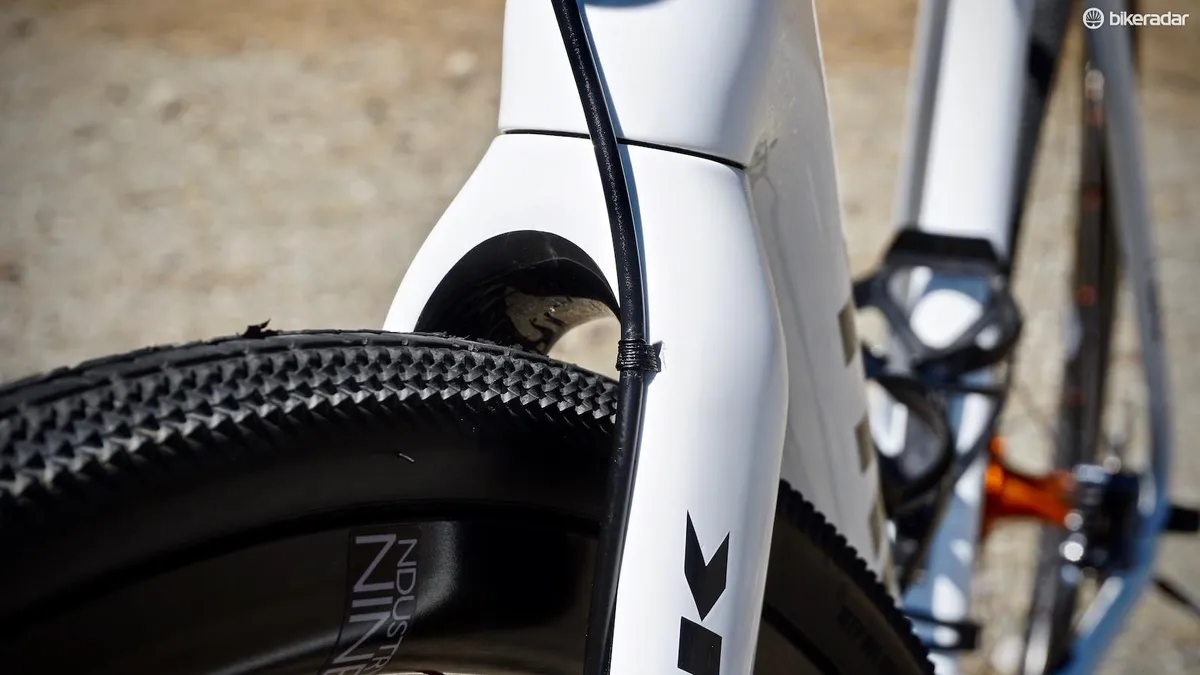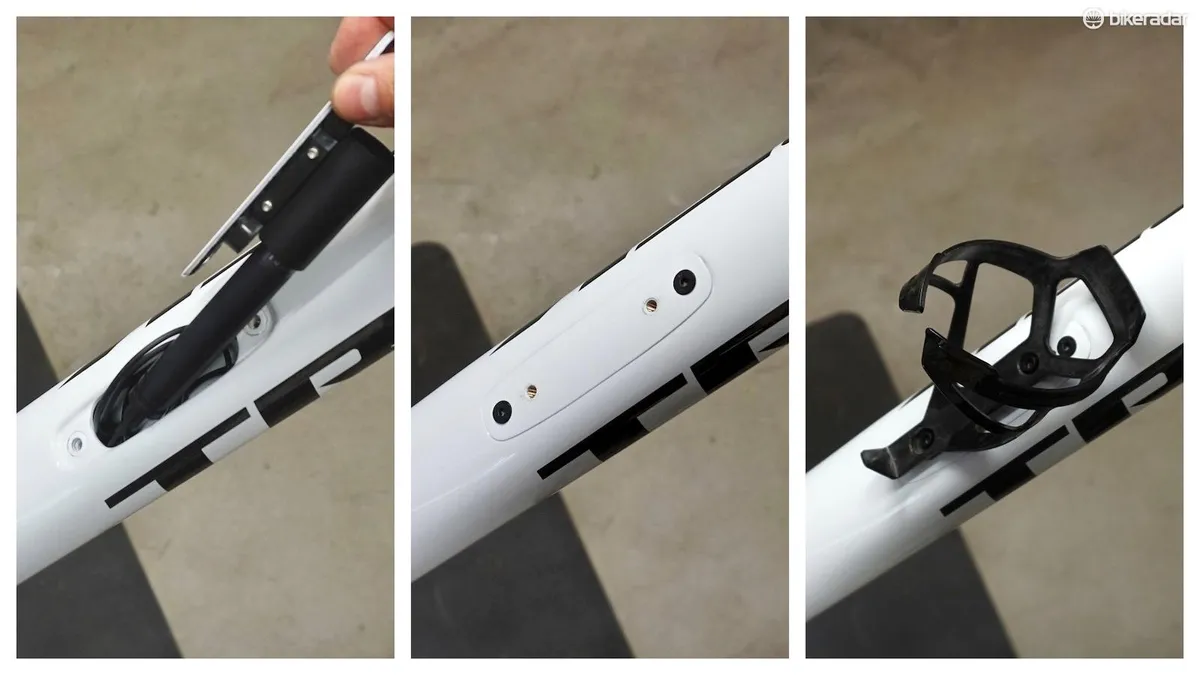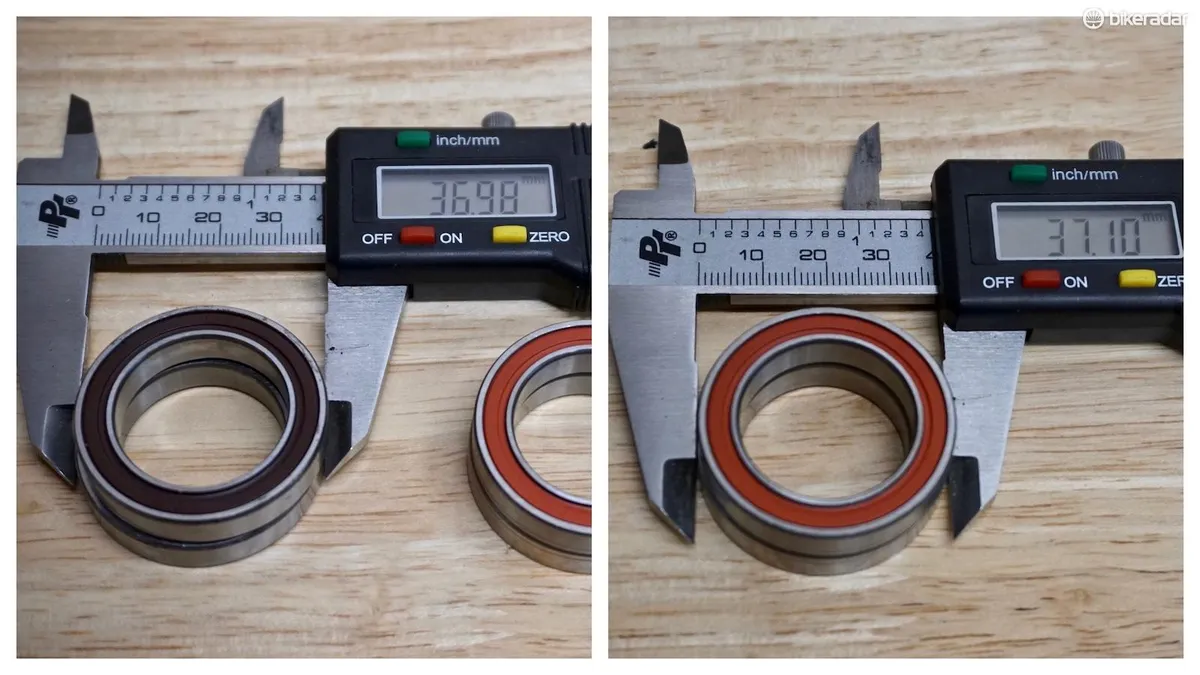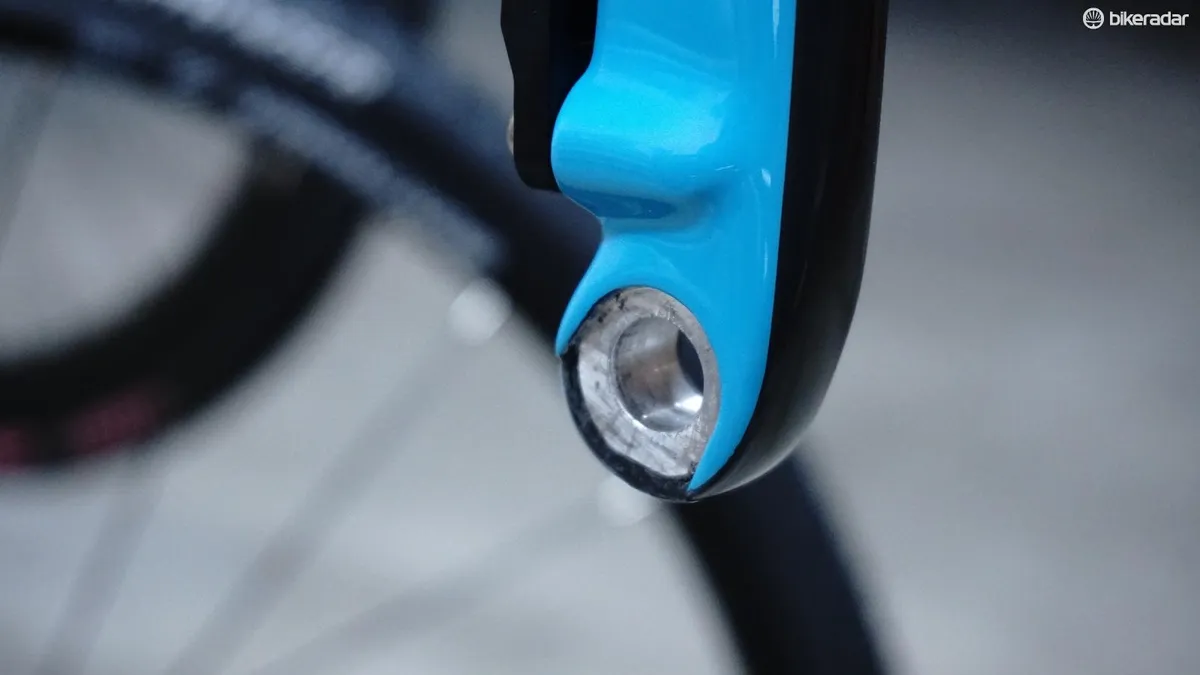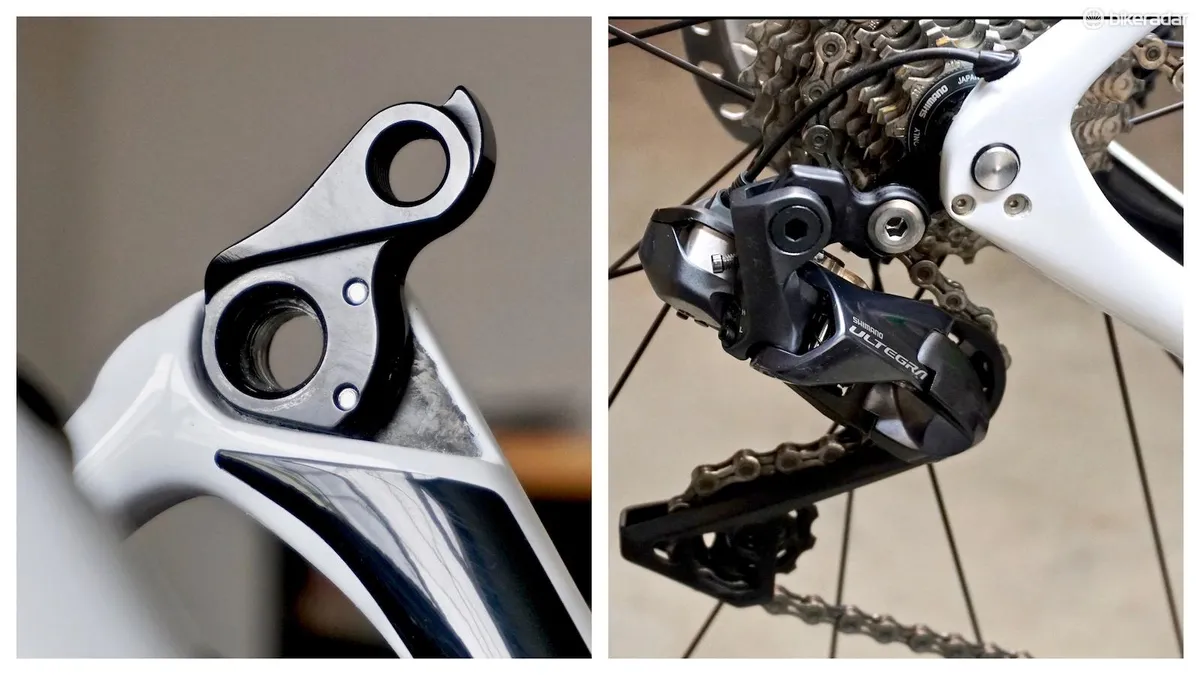Trek’s relaunched its Boone last summer, introducing new frames shapes, new cable management and thru-axles, but most importantly added its proprietary IsoSpeed decoupling system to the front end.
2018 Trek Boone RSL specifications
- Frame: 600 Series OCLV carbon with IsoSpeed (flatmount)
- Fork: Trek IsoSpeed Cross (flatmount)
- Dropout: 12x100mm(F); 12x142mm(R)
- Bottom bracket: BB90
- Seatpost: 135 or 175mm length; 5 or 20mm offset
- Max tire clearance: 40mm
- Size options: 49, 52, 54, 56, 58, 61
- Weight (size 56): 4.08 lbs / 1.86 kg
Firing on all cylinders for 2018
Despite having seen the Telenet Fidea Lions squad riding the Boone in early winter of 2017, Trek retailers weren’t seeing framesets until August 2017, with complete bikes hitting the showroom floor in October. The late arrival meant the new Boone was out of the running as a new race rig for many riders.
Compared to the previous generation Boone, Trek claims the entire bike saw an overhaul. Trek’s road product marketing manager Tony Lemke laid it out cleanly, stating it had “new front IsoSpeed, 12mm thru-axles (front and rear), new frames shapes, new control centre in the down tube, but the same geometry as before.”
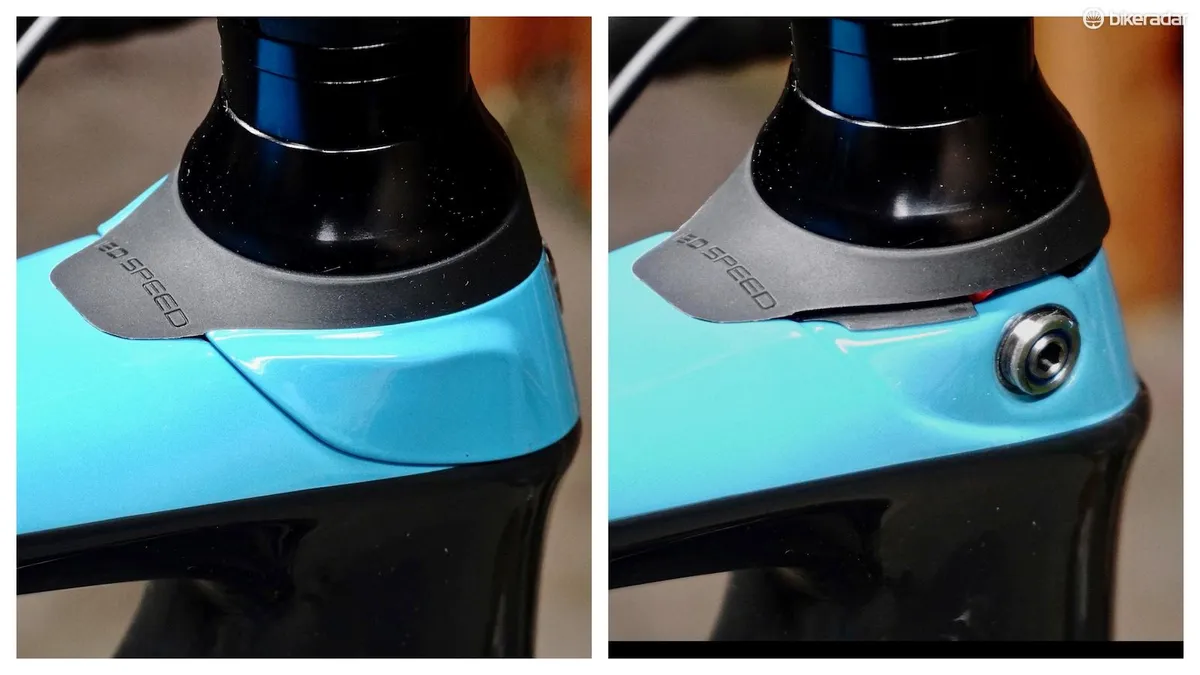
New tube shapes were required to accommodate the front-end addition of IsoSpeed, but Trek went further and pretty much revamped the whole bike axle-to-axle, removing the braze-on front derailleur mount in the process.
As exciting as new frame shapes and internal routing strategies might be, the previous-generation Boone was consistently receiving high reviews, making the real interest of the new bike the addition of IsoSpeed technology to its front end.
- 6 reasons you should get into cyclocross
- The new Trek Crockett looks perfect for privateer cyclocross racers
- Pro bike: Sven Nys' custom Trek Crockett SS
The lowdown on IsoSpeed
The seat-tube cluster of the previous generation Boone already possessed the IsoSpeed ‘decoupling’ system, but lacked the same forgiveness up front.
Trek introduced front IsoSpeed on the Domane, its staple endurance road bike, nearly two years ago. With some fancy engineering at the head tube and fork, the technology was well received, subduing the sting of undesirable road features.
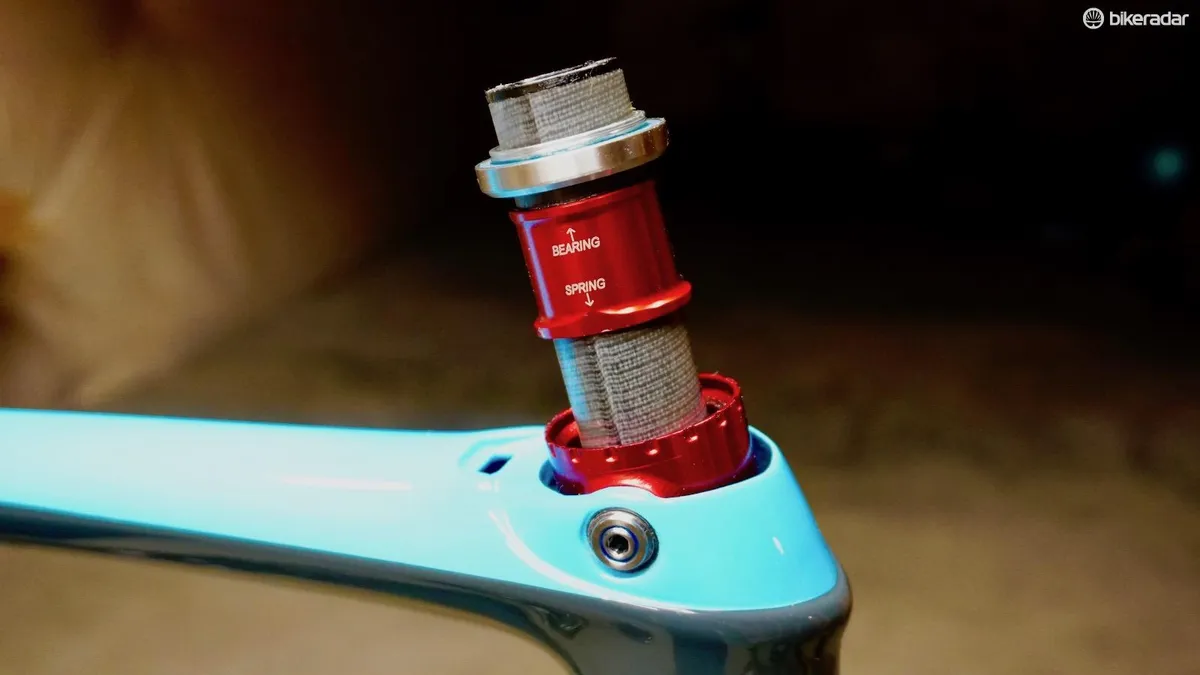
The critical aspect of the IsoSpeed addition to the front is that it’s quite subtle. Of all the current trends towards comfort on road and mixed-terrain bikes, IsoSpeed has to be tops — minimal weight penalty, easy to service (if needed at all), and it’s easy on the eyes. Plus, as it turns out, it works brilliantly.
Regardless of the success on the Domane, the question remained whether a cyclocross bike would benefit from the same technology.
For nearly six weeks, my experience was that it fell into the category of engineering gimmick. But as it turns out, my riding wasn’t allowing IsoSpeed to do the work it was designed to do.
When riding unforgiving terrain (roots, rocks, potholes, etc.) the natural response to obstacles is to unweight the bars to keep from getting rattled — classical conditioning at its finest. But whether it’s sitting on somebody’s wheel or just a lack of attention, sometimes we don’t have the benefit of anticipation, and that’s when the true performance of IsoSpeed on the front end of the Boone presents itself.
Imagine not having to unweight at every obstacle, resulting in compromised front-wheel traction. Consider the possibilities of how your racing changes when you can choose lines based on the shortest distance between A and B, and not on what won’t pulverise your wrists, elbows and shoulders.
The engineering
IsoSpeed engineering is as elegant as anything I’ve seen on a bicycle, which is to say it definitively checks the form and function boxes. There’s little to complain about visually and (like I keep saying), it works. And what’s more impressive is that it works proportionally; the rear is more active than the front and that’s exactly what it should be, based on weight distribution and handling requirements.
For comparison’s sake, the past two years have provided the opportunity to ride Lauf’s Grit fork (30mm travel), Fox’s AX fork (40mm travel) and Specialized’s Future Shock system. While each has merits, I find Trek’s system to be ideal for the rider seeking just enough compliance to dull the bite of sharp edges without losing feel of the terrain beneath.
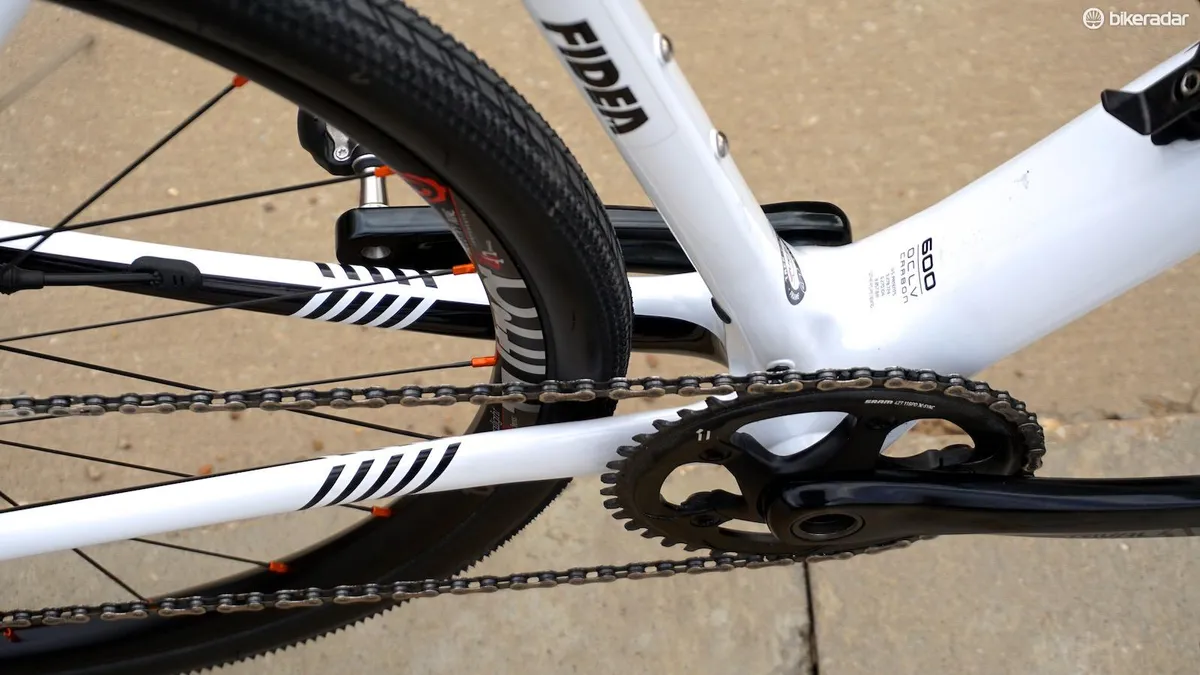
Although I hesitate to minimise the beauty of the engineering, the closest description I can muster up is that it feels like three layers of gel tape on the bars, but without losing the feel of the bike.
As for the rear IsoSpeed, about all that needs to be said is… yes. The benefit of the system on either end is compliance without a loss of performance, and regardless if you’re at the front row or the last, that’s something every rider can benefit from.
2018 Trek Boone RSL maintenance
The system’s maintenance is obviously a necessity when considering its true cost/benefit. Nearly 110 hours of riding passed before the first audible indication of a service requirement, and keep in mind that I wash bikes far too often, as in, “former team mechanic with bike-wash withdrawals”. Neurotic. The fact that it didn’t start making a noise sooner is impressive.
Despite only the rear having a minor creak, overhauling both systems took about 30 minutes and consisted of disassembly, cleaning, bearings check and applying a thin film of Park Tool Polylube grease. A major benefit is that it doesn’t take an engineering degree to manage, nor an owner’s manual for that matter.
I’ve not touched either system since, and that’s easily been an additional 200 hours of riding. Bravo to you Trek!
Stack it up
Worth noting is the handlebar stack and reach can affect the magnitude of the front IsoSpeed’s compliance. The higher on the steerer or longer the stem, the more compliance the system can deliver. This was initially based on my riding experience, and later validated by Trek’s engineering department.
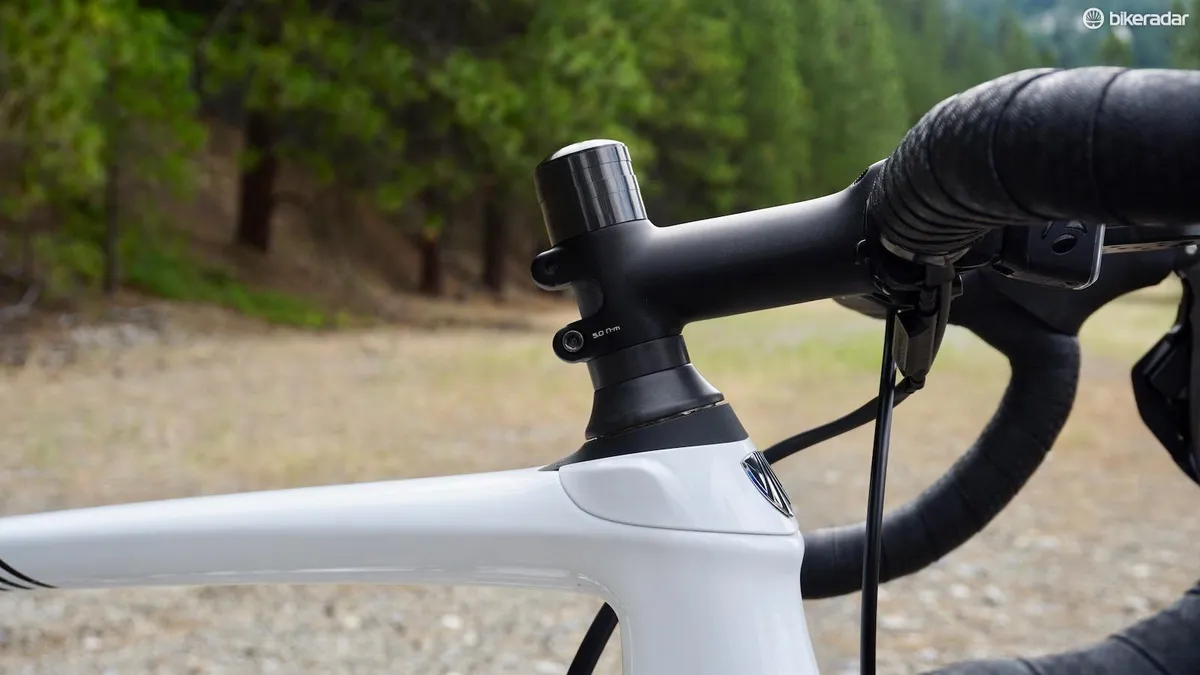
I run a 110mm stem with only 10mm of spacers above the headset top cone, which is to say I’m at the least active end of things, and I have no complaints about the system’s performance.
To keep things simple, let's just say Trek’s IsoSpeed system on the Boone is awesome and I’m not sure I ever want to ride a cross-country or gravel race without it.
The champion of ’cross
By the time this Boone arrived, ’cross season was nearly finished. But this frameset, and the Boone 5 Disc Trek were ridden on the same courses and put through the same evaluation process as the Best Cyclocross Bikes of 2018.
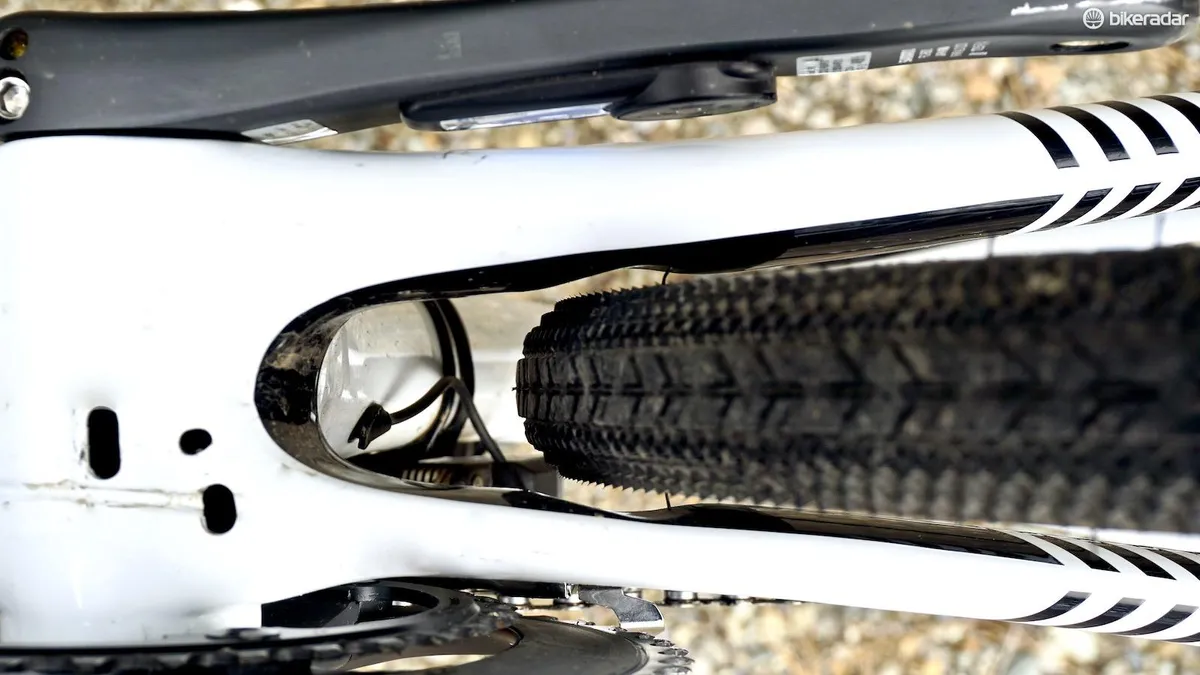
The Race Shop Limited frameset and Boone 5 share the same material and construction, which is to say they are the same frame, sans paint scheme. As such, this is the top-performing bike of any cyclocross bike I’ve ridden. The Boone 5 tops the best cyclocross bike of 2018 and the frameset wins all the titles — most predictable handling, best balance of acceleration and stiffness, and amazing compliance, all while still being incredibly light (second only to the Specialized Crux).
We all ride our cyclocross bikes on mixed-terrain once season is over. Hell, some of us are even losing interest in pinning on numbers at ’cross races period, given the increasing quality and quantity of mass-start mixed-terrain events. Talking of which…
What counts as gravel riding anyway?
To some, gravel riding is only 200 miles of suffering in Kansas. Great. Got it. I call that adventure, not to be confused with touring or bike-packing.
What others call gravel I call mixed-terrain or multi-strada (strata?). One minute you’re pedalling down a paved surface, and then it’s not paved, and then it is, and then it’s not. And when it’s not paved it’s sometimes a packed dirt fire road, and sometimes it’s dusty gravel, and sometimes it’s more off-road than road, and sometimes it’s 30 miles but other times it’s 100 miles.
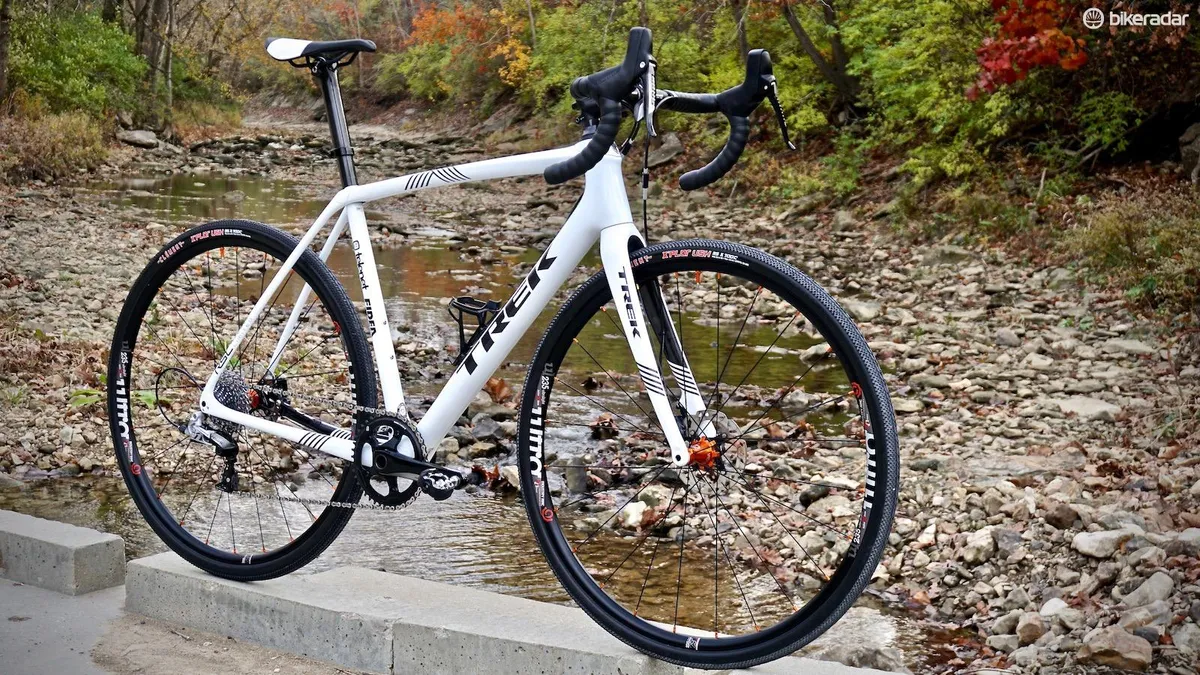
Regardless of the details, 28-38mm tubeless tires are sufficient. And it’s never stones the size of my fist, because that would be stupid, especially for 200 miles.
Now that this is settled, the Boone does indeed make an amazing mixed-terrain bike. Preemptively, it’ll fit 40mm tires.
And as long as I’m making the leap, the Boone has also allowed me to sell my road bike. Yeah, that’s right, the Trek Boone is my cyclocross, gravel and road bike and it does all three pretty well, excelling of course in off-road conditions.
The Boone from road to gravel
On the road it handles quick like a race bike should, but it's never nervous. It accelerates without hesitation and manages weathered roads of the local mountainous terrain with grace. And it’s a whopping 16.9lbs with an Ultegra Di2 hydraulic group, Industry Nine I9.35 Disc wheels with Schwalbe Pro One 28mm tires, and way too much tire sealant.
As for the mixed-terrain side of things, Trek unveiled the Checkpoint (and even a Domane gravel) to bring massive clearance, rack mounts, and added wheelbase and although I’ve not ridden it, I’ve heard it’s a great adventure bike…I mean gravel.
Interestingly, the Checkpoint is not equipped with front IsoSpeed. But if you’re craving a racier version of a mixed-terrain rig, the Boone is the answer.
Control-freak cables
The Boone has an effective compliance system and a geo to serve as a genuine multi-purpose rig and, to match its versatility, the details have been truly refined.
In addition to the updated compliance tech the Boone gets a new cable management system that complements the natural lines of drivetrain and brake housing, keeping things tidy on the underside. Trek pegged the system ‘Control Freak Cable Management’.
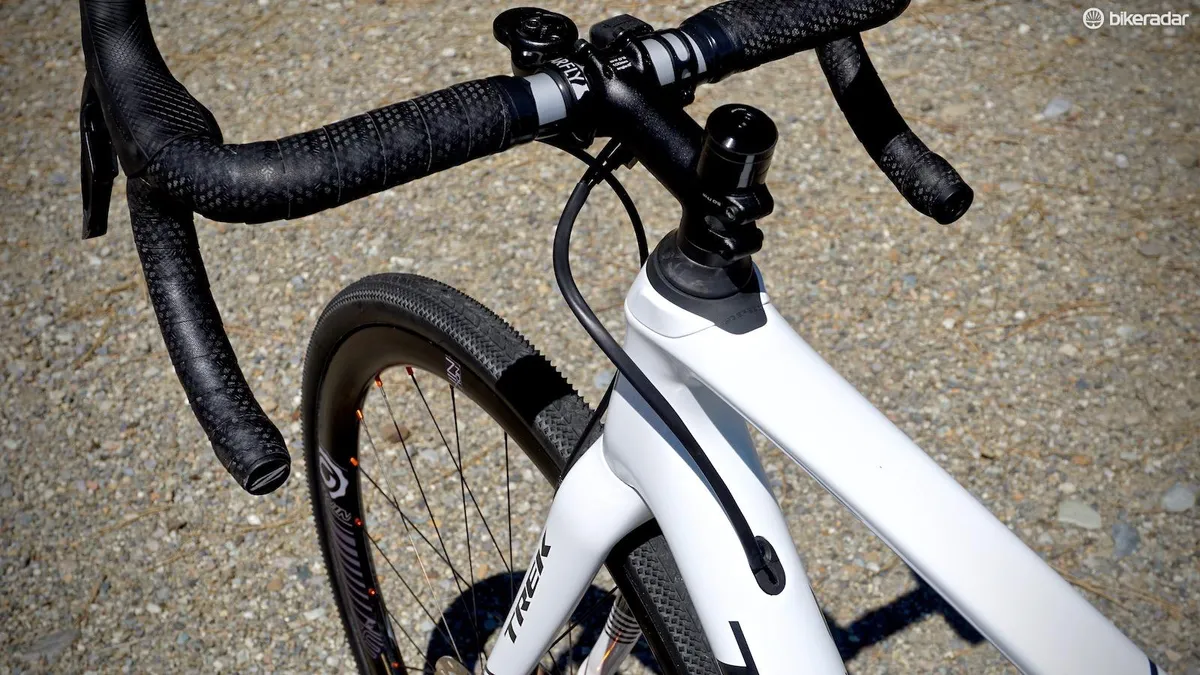
The system is flexible to accommodate virtually any drivetrain and brake setup cleanly and efficiently. Plus the down tube possesses a massive trapdoor dubbed the ‘Control Center’, which makes guiding housing or connecting electronic wires a snap. Plus I find it more accessible and manageable location to house batteries.
In addition to the front-end cable management, the derailleur and brake exit ports on the rear of the bike allow natural housing lines, preventing kinks or sharp bends. Combined with an external front brake hose, there is no torque on disc-brake calipers when trying to get perfect caliper-disc alignment, which I find a bonus and surprisingly uncommon on disc bikes.
Trek-like precision
Product managers have leveraged in-house Trek Precision Fit knowledge to refine fit parameters. While proprietary seat masts may not be your cup of tea in general, my experience with Trek’s is that all the limitations of previous concepts are gone, especially finding the proper fit. The topper comes in two different lengths and two different offset (setback) options, so dialing in your seat position is no problem. Plus, the IsoSpeed requires the seat mast ‘topper’ solution to function.
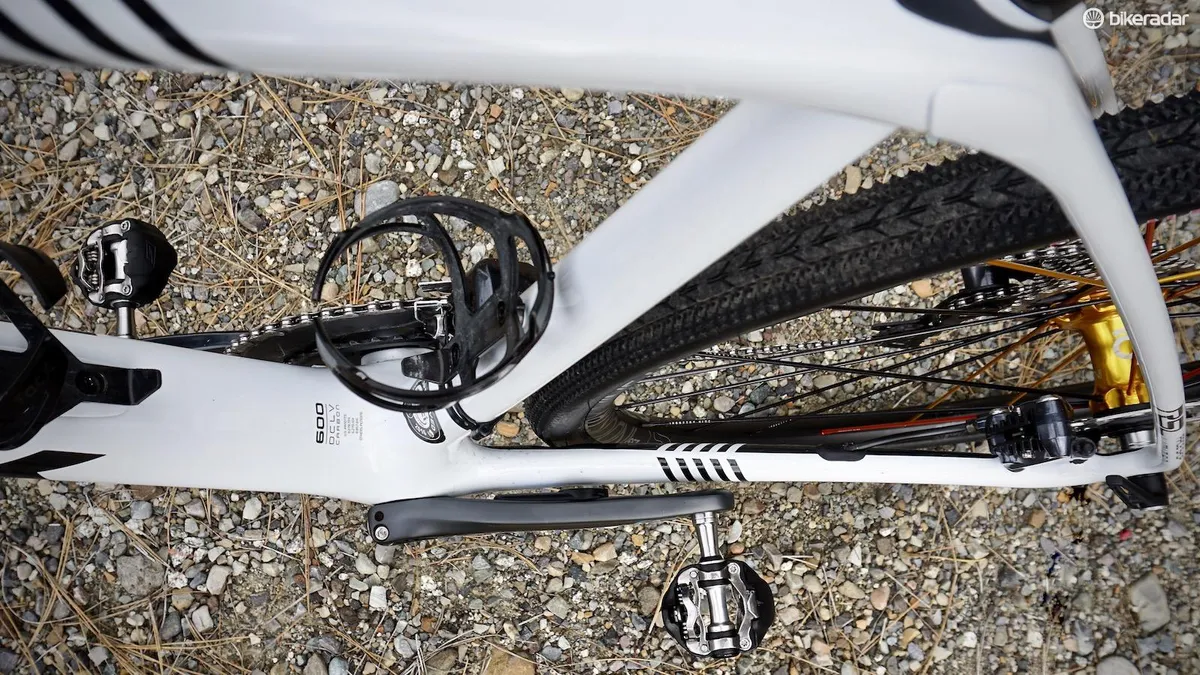
The only eyebrow-raising aspect of the Boone is the bottom bracket. It leverages Trek’s BB90 press-fit spacing, which typically requires a 37.0mm bearing (OD) that accommodates 24mm or 24/22mm crank spindles. However, some of Trek’s BB90 bikes require what it calls a 'V2' bearing, which measures 37.1mm. This particular frame was one of those and when I installed standard-sized bearing (37.0mm) the crank was not tight in the frame. While this may seem unnerving, Trek knows of the situation, and has a solution that has left me completely satisfied as a mechanic and a rider.
And finally…
As a final wink to the product team at Trek, like the Crockett, the Boone has a solution for the tedious task of removing and installing bottle cages between races and training days — introducing the CrossLock cage system. Install the frame and cage mounts to their respective positions and mate them when training or remove them when racing. Bottles when you need them, space to carry when you don’t. Clever.
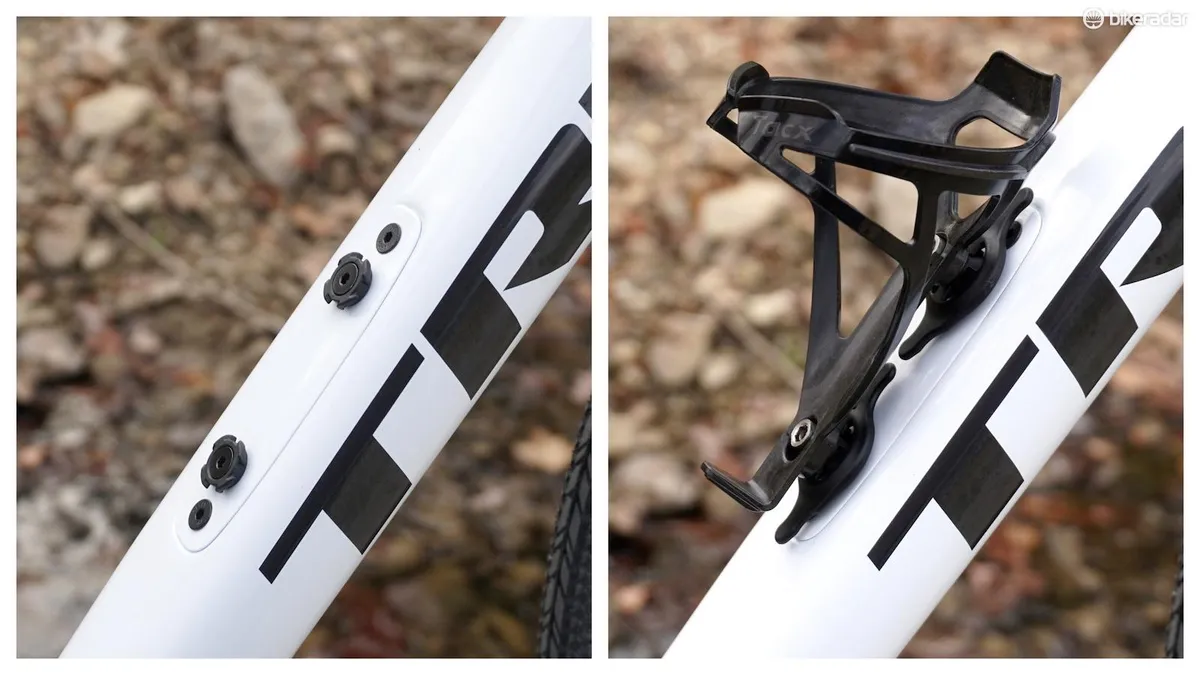
To sum it up, from axle-to-axle the 2018 Boone oozes ’cross — dialed geo, brilliant compliance, snappy acceleration and the attention to detail to match. While plenty of readers believe it’s all marketing, it’s obvious Sven Nys and Katie Compton actually played a role in development of the bike because it’s wicked fast, super fun, and clearly a well-thought-out product from starting gun to bell-lap.
The 2018 Trek Boone 5 Disc (and other cyclocross models) are currently available from Trek retailers worldwide, so game on for 2018 ’cross (and gravel and road) season!
